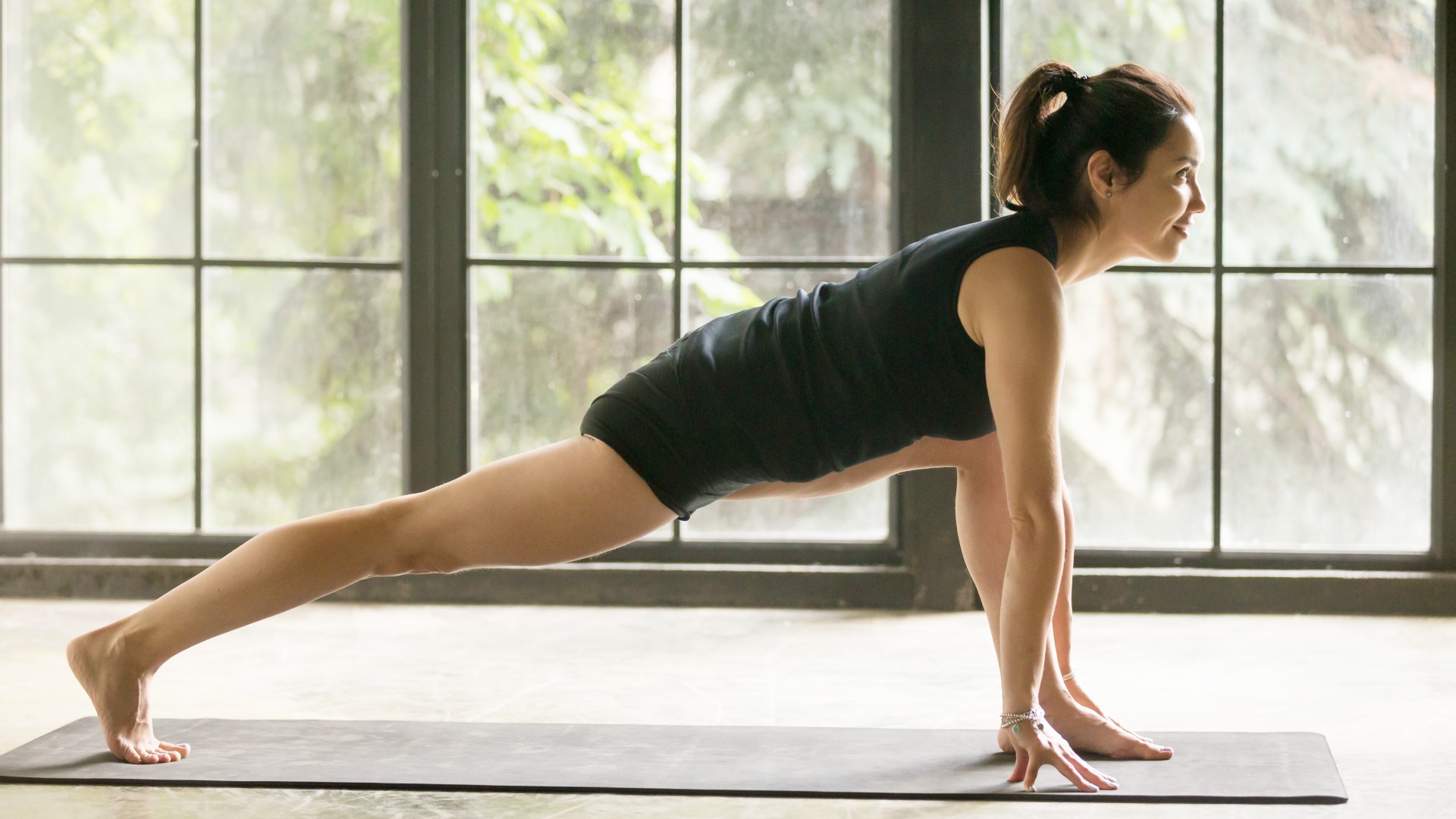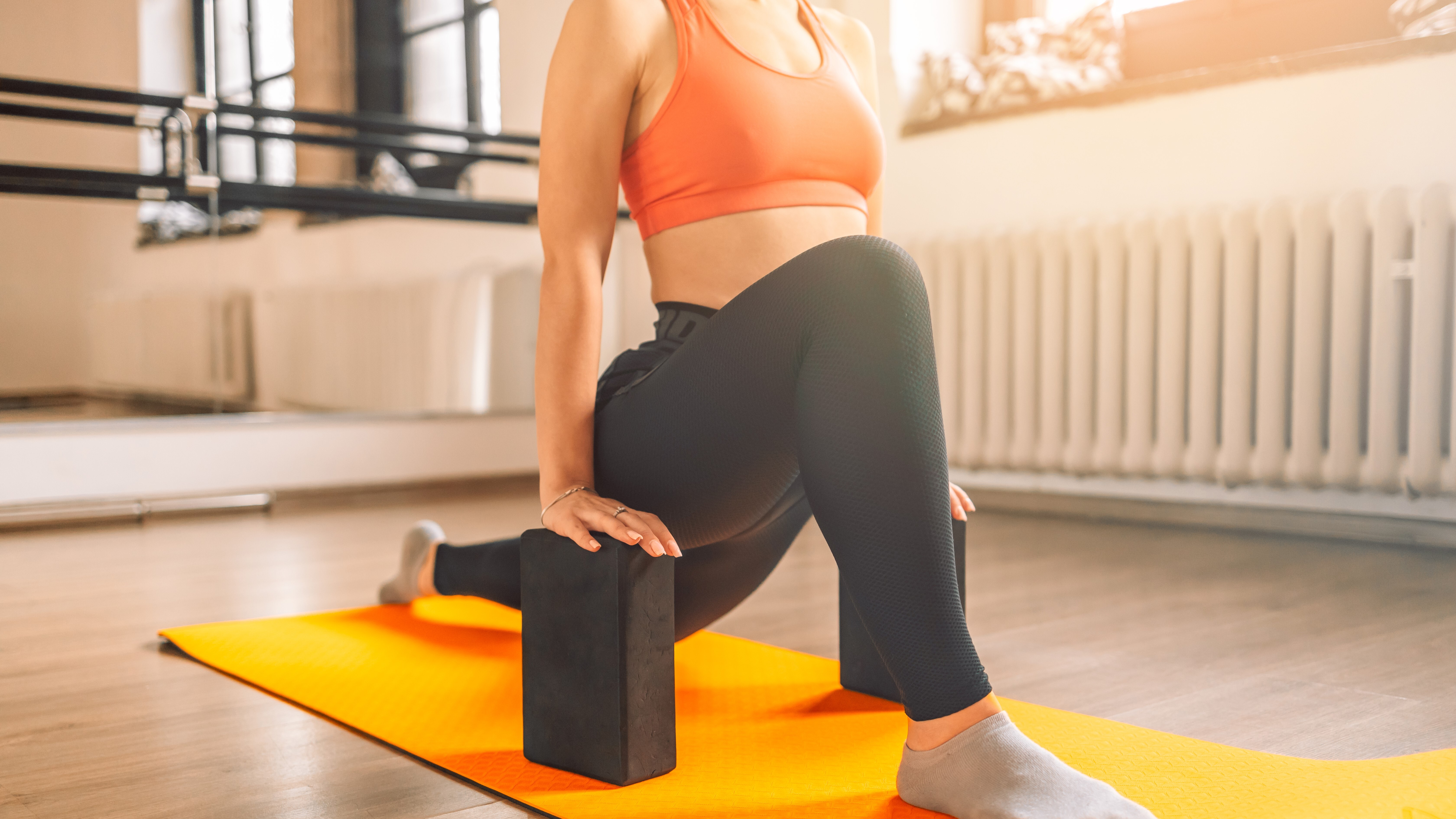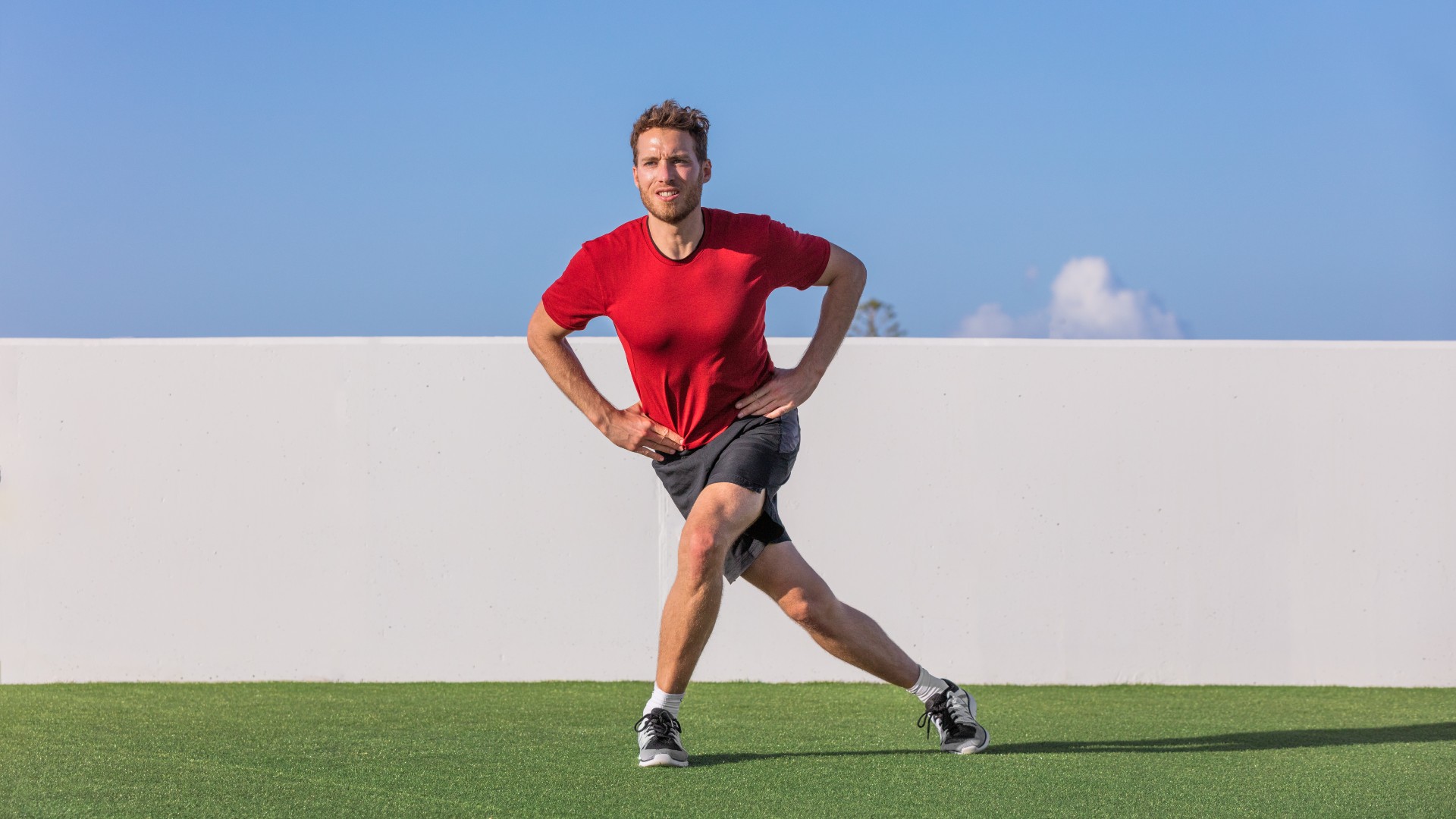
Dragon pose is a deep low lunge variation found in yoga that can boost hip flexibility and contribute toward building lower body strength using your body weight.
There are a few variations of dragon lunges flying around, but I tried the yin yoga variation called dragon pose — it’s still a lunge, but kinder on the knees and allows you to hold a stretch instead of moving in and out of lunges.
That said, the dynamic dragon lunge can help develop more sophisticated mobility, lending itself to mixed martial arts and grappling, so I cover both options below, then dive into what happened when I tried the exercise every day for one week. Here’s what I learned.
What is dragon pose?
Dragon pose is a more restorative version of the dragon lunge and primarily offers a deep hip and groin stretch, helping to build flexibility and range of motion around your pelvis. The exercise also targets the adductors and quads, and to a lesser degree (depending on the angle of your knee), your glutes and can relieve symptoms of sciatica.
I recommend following these steps with tips from yin yoga instructor Bernie Clark:
- Start on your hands and knees in a tabletop position
- Step your right foot into a low lunge position
- Heel-toe your right foot further forward to create more space for a deep lunge
- Position your right knee over your right ankle and keep the front heel flat
- Draw your right knee forward until you feel a deep stretch down the left hip flexor and quad muscles
- Position your hands on either side of the front foot
- Tuck your back toes under and draw your left heel back a few times, then lower the top of your left foot onto the mat, pressing through your little toe
- Hold the stretch, then release the stretch, return to the tabletop and switch sides.
If you have sore knees, add a blanket, pillow, or rolled-up towel underneath your back knee or ankle to relieve tension. You could also position the shin of your back leg on a yoga block to elevate the knee from the mat and consider tucking your toes under.
Here's what happened when I tried the 3-minute dragon pose variation every day.
There are plenty of modifications available
What I love about this exercise is that it’s widely accessible for all fitness levels and you can modify it to your ability using one of the best yoga mats and a few optional props.
At the start of the week, I followed Clark’s advice by placing two blocks on either side of my front foot (baby dragon) and resting my hands flat on them to help create a bridge between my hands and the ground. This is beneficial for anyone with very tight hips and quads.
Once my hips began to open, I placed both hands on the floor on either side of my foot. By the end of the week, I practiced walking my hands to the very top of the mat and pressing down through my fingertips or palms. I also tried bringing my hands to the inside of my front leg and forward for an even deeper lower-body stretch while stretching my back. The simple act of reaching my hands forward helped send my weight forward, drawing my knee over my ankle.
Clark also recommends resting your chest on your thigh to send your weight forward or to avoid pinching in your hips, turn your front foot slightly outward.

My hips felt amazing
As the week progressed, I wanted to get deeper into my hips, so I added a gentle backbend by lifting my chest and driving my arms overhead, pressing the hips forward. After roughly 30 seconds, I folded forward and brought my elbows onto a block closely positioned to the inside of my front knee (called “dragon flying low”).
By the end of the week, I progressed to lifting my back leg away from the ground, squeezing my quad to keep my leg straight. Honestly, my hips have never felt so loved.
I didn’t get much glute engagement — so I mixed things up again
My glutes are perhaps my weakest and tightest muscle group, so I mixed things up.
This endlessly scalable exercise began to feel like a playground — I could keep modifying each day as I dropped deeper and deeper into the stretch. To engage my glutes more, I practiced drawing my front knee outward to open the hip (this also helps most people lower to the elbows on the inside of the front leg if this interests you) while lifting my arm into the air and adding a gentle twist toward the front leg — “twisted dragon.”
However, this variation does less for ankle mobility, so I recommend keeping your knee pressing toward, heel lowered and weight forward toward the front of your mat to build ankle flexibility.
3 minutes felt like forever
In everyday life, three minutes of anything doesn’t sound like much. But dragon pose? Plenty, thank you. To keep things simple, I performed 90 seconds on each leg, gently transitioning through a downward-facing dog between sides.
Each day, once I’d found the variation I wanted to work with, the next challenge was to hold the stretch without wiggling around, which is certainly an exercise in mind over matter.
To improve my focus, I used guided breathing exercises and closed my eyes, using the inhale to expand my stomach and the exhale to lower deeper into the stretch. Adding this small mindfulness exercise each day helped me relax and feel calmer as I stretched, and my lower body felt amazing afterward.
Are lunges good or bad for you?

There’s a lot of noise around lunges and whether or not they’re good for you. If you’re working with knee pain, reverse lunges might work better than forward lunges, which more heavily front-load the knees.
However, depending on the knee pain, neither or both could be off the table, so I strongly recommend speaking with a physiotherapist or physician before starting an exercise program that includes lunges.
My advice is to avoid performing exercises that generate pain and lunges can exacerbate discomfort. That doesn’t mean lunges are off the table completely, and finding a variation that works for you can help you build lower body strength without pain. Win-win.
What is a dragon lunge?
The dragon lunge looks a lot like a curtsy lunge and uses lateral and backward movement — a bit like how you would curtsy. You can add weight for leg-day programs, strengthening the outer glutes and quads, or use it as a mobility conditioning drill to improve hip, knee and ankle stability.
Some people like to step forward into the dragon lunge using a gentle twisting motion, while others prefer stepping backward and to the side as prescribed in the video. However, I wouldn’t jump straight into dragon lunges if you have a knee injury. But that’s for another day (and challenge).







